Click here and press the right key for the next slide.
(This may not work on mobile or ipad. You can try using chrome or firefox, but even that may fail. Sorry.)
also ...
Press the left key to go backwards (or swipe right)
Press n to toggle whether notes are shown (or add '?notes' to the url before the #)
Press m or double tap to slide thumbnails (menu)
Press ? at any time to show the keyboard shortcuts

Origins of Moral Psychology
[email protected]
Are there innate drivers of morality?
Key source: Hamlin, 2013. ‘Moral Judgment and Action in Preverbal Infants and Toddlers’.
moral sense vs moral judgement
Moral abilities---including a moral sense---evolved to aid group living, specificially to motivate and sustain cooperative action.
Three requirements
- prosociality (helpfulness towards others)
- discrimination between pro- and anti-social acts
- retribution
adapted from Hamlin, 2013
Warneken & Tomasello, 2006 supplementary materials
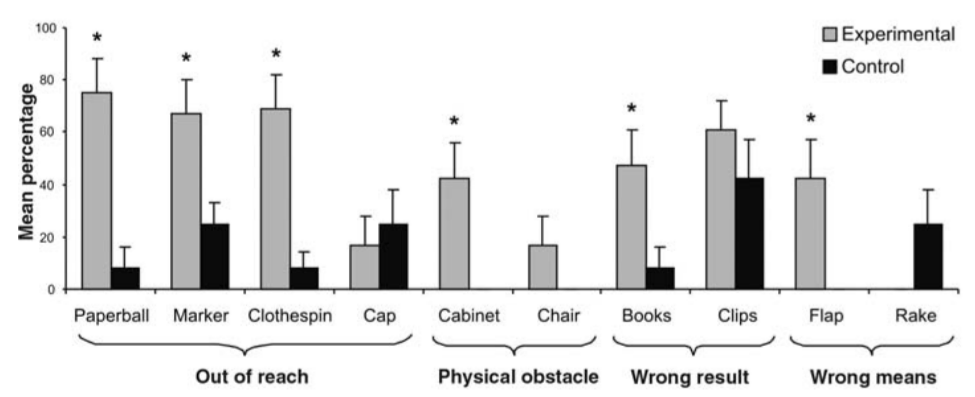
Warneken & Tomasello, 2006 figure 1
Moral abilities---including a moral sense---evolved to aid group living, specificially to motivate and sustain cooperative action.
Three requirements
- prosociality (helpfulness towards others)
- discrimination between pro- and anti-social acts
- retribution
adapted from Hamlin, 2013
Hamlin et al, 2011 supplementary materials
Hamlin et al, 2011 supplementary materials
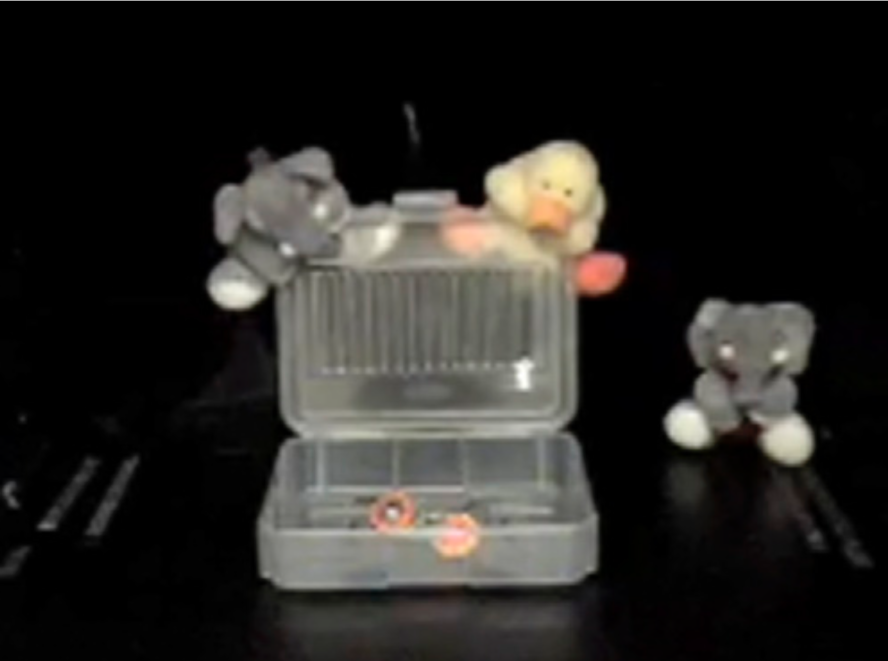
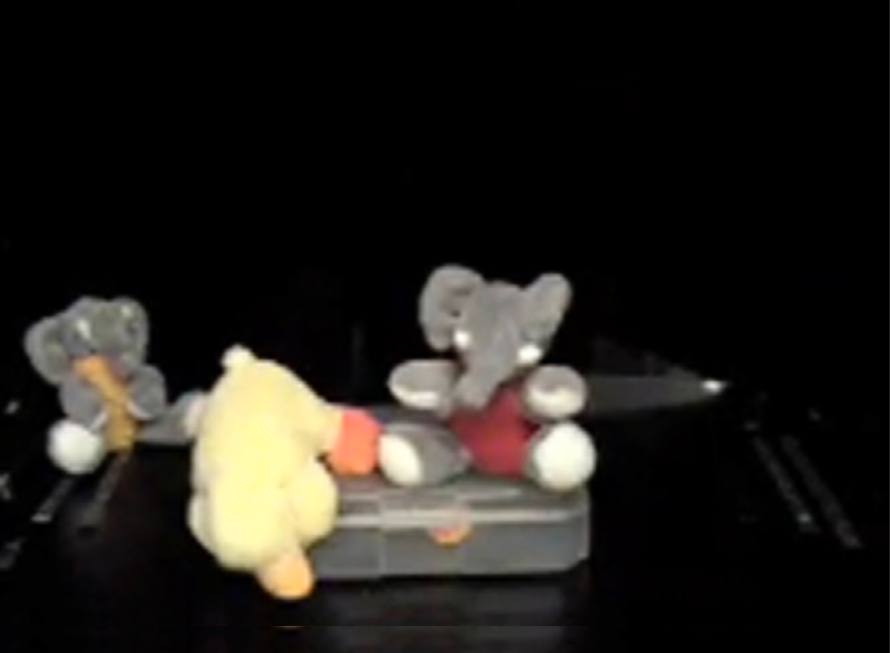
Earlier research: Infants prefer to reach for good elephant.
Moral abilities---including a moral sense---evolved to aid group living, specificially to motivate and sustain cooperative action.
Three requirements
- prosociality (helpfulness towards others)
- discrimination between pro- and anti-social acts
- retribution
adapted from Hamlin, 2013


Earlier research: Infants prefer to reach for good elephant.
Now: infants see the good [/bad] elephant being treated pro and anti-socially ...
Hamlin et al, 2011 supplementary materials
Hamlin et al, 2011 supplementary materials
Hamlin et al, 2011 supplementary materials
How infants feel about the two moose?
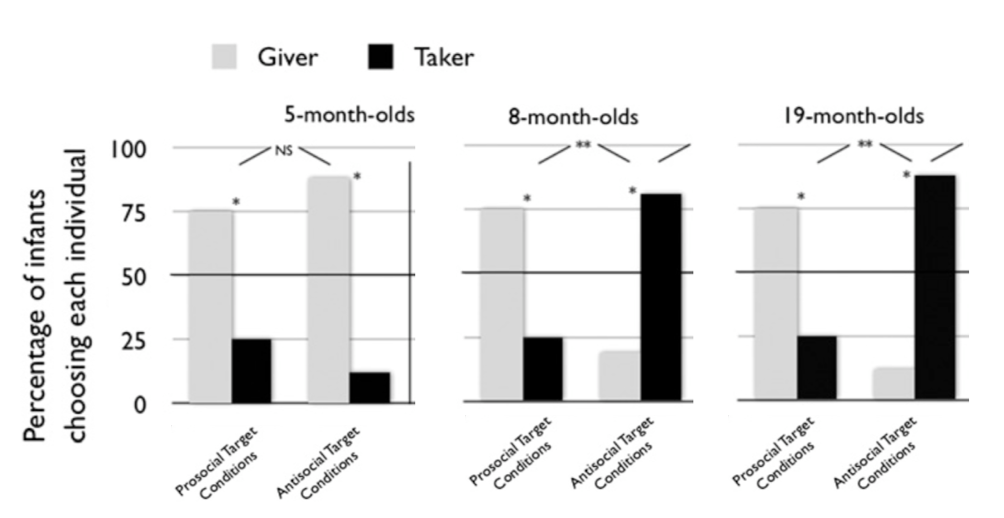
Hamlin et al, 2011 figure 1 (part)
Toddlers: giving a treat
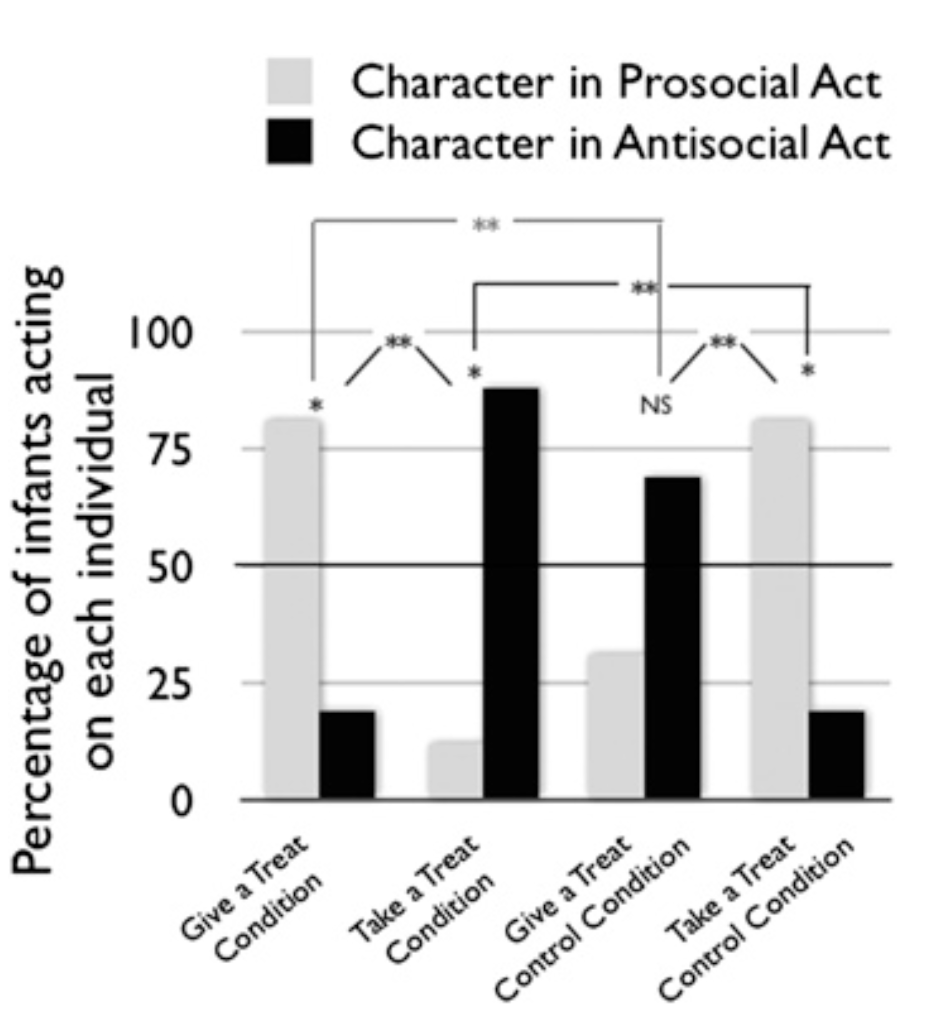
Hamlin et al, 2011 figure 2 (part)
‘infants are making relatively complex and sophisticated social judgments in the first year of life. They not only evaluate others based on the local valence of their behavior, they are also sensitive to the global context in which these behaviors occur. During the second year, young toddlers direct their own valenced acts toward appropriate targets.’
Hamlin et al, 2011 p. 19933
Are there innate preverbal drivers of morality?
‘developmental research supports the claim that at least some aspects of human morality are innate. From extremely early in life, human infants show morally relevant motivations and evaluations—ones that are mentalistic, are nuanced, and do not appear to stem from socialization or morally specific experience’
Hamlin, 2013 p. 191
Poverty of stimulus argument
- \itemHuman infants acquire X.
- \itemTo acquire X by data-driven learning you'd need this Crucial Evidence.
- \itemBut infants lack this Crucial Evidence for X.
- \itemSo human infants do not acquire X by data-driven learning.
- \itemBut all acquisition is either data-driven or innately-primed learning.
- \itemSo human infants acquire X by innately-primed learning .
compare Pullum & Scholz 2002, p. 18
‘the APS [argument from the poverty of stimulus] still awaits even a single good supporting example’
Pullum & Scholz 2002, p. 47
Are there innate preverbal drivers of morality?
‘developmental research supports the claim that at least some aspects of human morality are innate. From extremely early in life, human infants show morally relevant motivations and evaluations—ones that are mentalistic, are nuanced, and do not appear to stem from socialization or morally specific experience’
Hamlin, 2013 p. 191